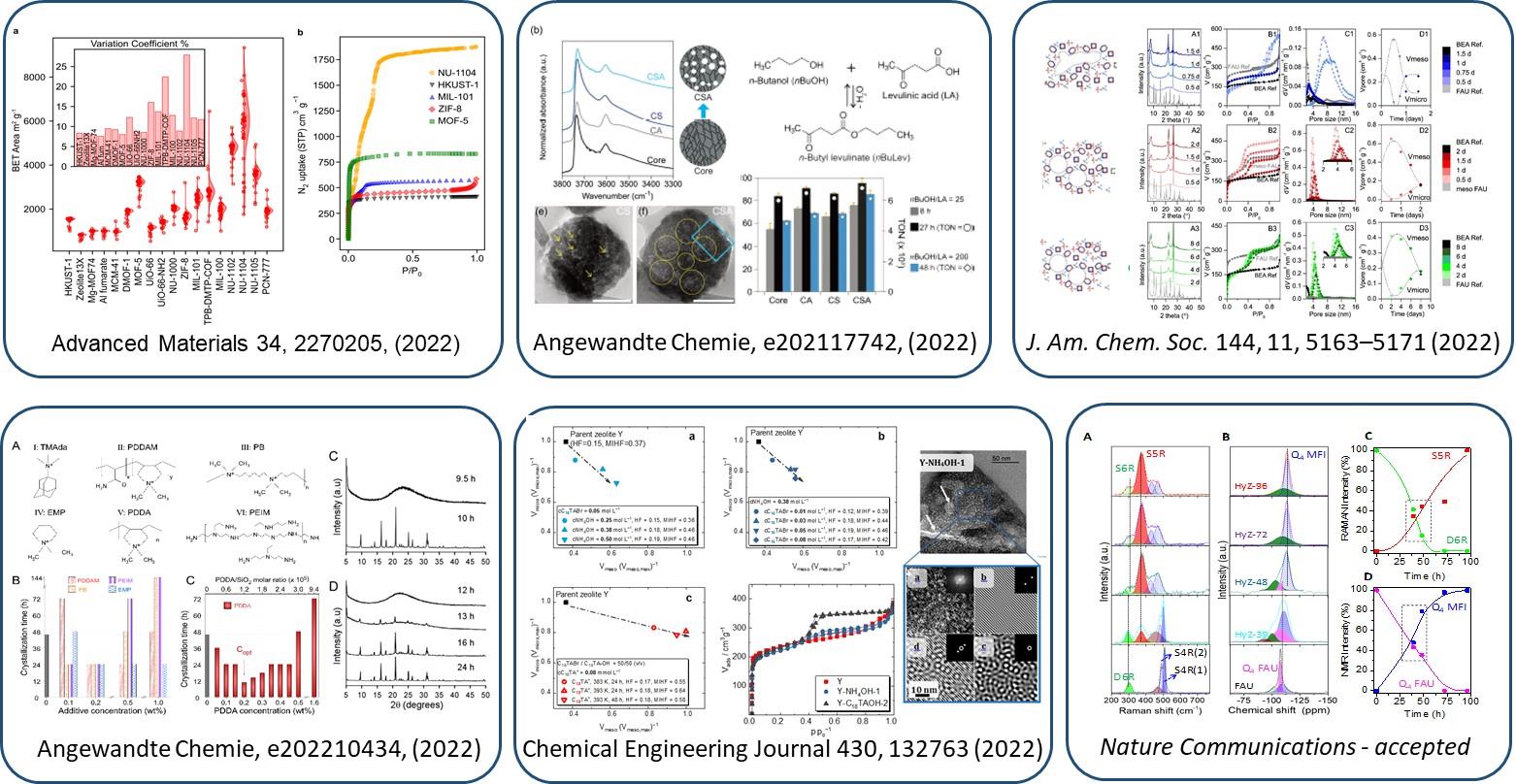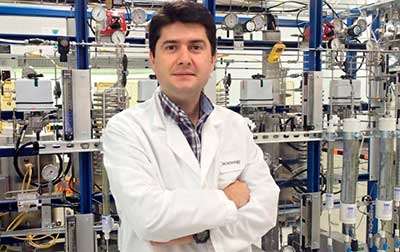Interzeolite Transformation Intermediates: Superior Catalysts for the Conversion of Bulky Molecules
J. García-Martínez
Laboratorio de Nanotecnología, Molecular, Departamento de Química Inorgánica, Universidad de Alicante, 03690 Alicante, Spain
Interzeolite transformation has been used to produce a novel family of hierarchical catalysts featuring excellent textural properties, strong acidity, and superior catalytic performance for the Friedel−Crafts alkylation of indole with benzhydrol, the Claisen−Schmidt condensation of benzaldehyde and hydroxyacetophenone, and the cracking of polystyrene [1,2]. Intermediate solids of the FAU interzeolite transformation into BEA display both increased accessibility due to the development of mesoporosity and strong acidity caused by the presence of ultrasmall crystals or zeolitic fragments in their structure (see Figure 1). [3]
During the presentation, I will describe a new strategy for the synthesis of superior hierarchical catalysts, whose properties evolve during interzeolite transformation. They are composed of zeolitic fragments and display improved accessibility. Because of these features, they effectively catalyze reactions involving large molecules. We realized this strategy for the interconversion of FAU into BEA. Additionally, we used quaternary ammonium surfactants to develop well-defined mesoporosity in the intermediates. By stopping the interconversion of FAU into BEA at different times, we were able to produce Interzeolite Transformation Intermediates (ITIs) showing optimized catalytic performance for a number of acid-catalysed reactions.

Figure 1. Some of our recent results and publications on the preparation and testing of more accessible heterogeneous catalysts for the conversion of bulky molecules.
An important advantage of this strategy is that the physicochemical properties and, therefore the catalytic performance of the hierarchical catalysts can be finely tuned by simply stopping the interzeolite transformation at different times. This creates countless opportunities for the development of hierarchical catalysts [4] with optimized properties and superior catalytic performance for those reactions in which zeolites present significant diffusion limitations.
References:
- M. J. Mendoza-Castro, E. De Oliveira-Jardim, N.T. Ramírez-Marquez, C. A, N. Linares, J. García-Martínez, J. Am. Chem. Soc., 144(11) 5163-5171 (2022)
- M. J. Mendoza-Castro, Z. Qie, X. Fan, N. Linares, J. García-Martínez, Nature Communications, (accepted)
- G. Fleury, M. J Mendoza-Castro, N. Linares, M. BJ. Roeffaers, J. García-Martínez, ACS Materials Lett. 4 49-54 (2022)
- R. Jain, A. Chawla, N. Linares, J. García-Martínez, J.D. Rimer, Adv. Mater. 33(22), 2100897 (2021)
DATE
Monday 22th of May 2023
TIME: at 12:00
LOCATION: Presencial Facultat de Química, Sala de Graus
SPEAKER
Dr. Javier García-Martínez

Laboratorio de Nanotecnología, Molecular, Departamento de Química Inorgánica
Universidad de Alicante, 03690 Alicante, Spain
